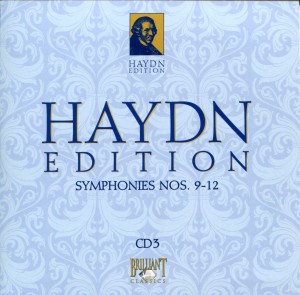 I really needed the allegro molto that opened Symphony No. 13 in D. I had been feeling a bit down, emotionally. Fall sometimes does that to me, anyway. But so do the weenies on the Internet who constantly bicker. They’re an energy suck.
I really needed the allegro molto that opened Symphony No. 13 in D. I had been feeling a bit down, emotionally. Fall sometimes does that to me, anyway. But so do the weenies on the Internet who constantly bicker. They’re an energy suck.
As I sat in my semi-lit office this morning at 8am, I wondered what the day would bring. Thankfully, I knew it would bring CD 4 of Haydn’s symphonies, which I was certain would lift my spirits.
I was right. It was a stirring way to begin the day.
According to its entry on Wikipedia, Symphony No. 13 in D,
was written in 1763 for the orchestra of Haydn’s patron, Prince Nikolaus Esterházy, in Eisenstadt.
The work can be precisely dated thanks to a dated score in Haydn’s own hand in the National Library of Budapest. Two other Haydn symphonies are known to have been written in the same year: the Symphony No. 12 and the Symphony No. 40.
That means Haydn was 31 when he composed this delightful symphony. Gee whiz, when I was 31 I was probably being a dick Continue reading

